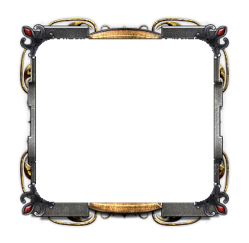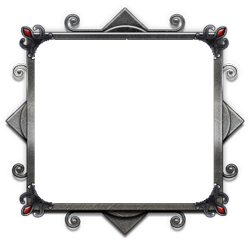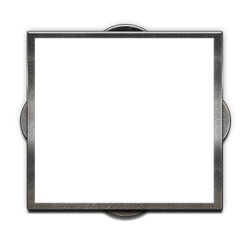Glass has been around, in one form or another, since the Bronze Age. We’ll pick up the thread a little later with the publication of Pirotechnicia by the late medieval craftsman Biringuccio:
"I shall speak to you of glass … as a fusible material that is almost made mineral by art and by the power and virtue of fire, born from the speculation of good alchemistic savants, through whose efforts it imitates the metals on one hand and the transparency and splendor of gems on the other."
Materials for glassblowing
The art of glassblowing is easy to understand: gather a big ball of hot, viscous glass onto a hollow iron pipe, blow it out to form a bubble, and with greater skill, a work of art. (As an aside, when glass was spun into disks without forming a bubble, it could be cut into flat window panes. These were slightly thicker at the center and thinner at the spun edge- when discovered in medieval frames, these uneven panes gave us the myth that glass flows over hundreds of years time.)
Glassblowing is the space for art and artisans, but these were supplied from the Roman era forward by early factories that could produce gigantic batches of raw glass to be divvied up among the smaller artisan shops that would craft the finished products. A 9-ton slab has been unearthed, [1] and a facility capable of manufacturing 40 ton slabs is known to have existed. Here, “the Roman glassmaker and the glassworker were working in two separate trades”. [2]
Today, we’ll focus on the trade of glassmaking, and delve into the details of the various coloring agents for glass. We’ll then discuss a little about what minerals those colors come from, and how a kingdom might have to search to develop trade in those minerals.
Glass: the most abundant mineral
First, a bit of geochemistry: as many of you probably learned at one point in school, oxygen is the most abundant element in the earth’s crust. Silicon follows close behind, and the two together form the essential ingredient of glass: silicon dioxide. Most beach sand is made primarily of this material, and Pliny the Elder relates an apocryphal story on the invention of glass thus:
"…the merchants, while preparing their repast upon the sea-shore, finding no stones at hand for supporting their cauldrons, employed for the purpose some lumps of nitre which they had taken from the vessel. Upon its being subjected to the action of the fire, in combination with the sand of the sea-shore, they beheld transparent streams flowing forth of a liquid hitherto unknown: this, it is said, was the origin of glass"
The natron is an alkaline soda ash, and it dramatically lowers the melting and softening points of glass. A similar ingredient is still used today to make soda-lime glass, found everywhere from canning jars to window panes on the International Space Station. In Roman times, natron was imported from the Egyptian desert; by the medieval period, it was replaced in Europe by plant or wood potash due to the loss of steady trade with Egypt. The glass fluxing agent therefore changed from sodium to potassium, which in turn required advancement in furnace design (potash glasses melt around 200C hotter than soda glasses). Throughout the ancient to medieval time frame, silica (from sand or placer deposits) remained constant as the main glass forming ingredient. The other ingredients varied in time and place, with two typical examples below:
Ingredients of glass
Roman “soda” glass
- Network Former: Silica (SiO2) from sand
- Flux: Soda ash (NaCO3) from natron mineral deposits or burnt saltwort
- Stabilizer: Limestone (CaCO3) as an additional component of beach sand (shells)
- Coloring agents
Medieval Europe “forest” glass
- Network Former: Silica (SiO2) from sand or quartz crystals in river deposits
- Flux: Potash (K2CO3) from wood or plant ashes
- Stabilizer: Quicklime (CaO) as an additional component of wood or plant ashes
- Coloring agents
Replacing either soda or potash with large amounts of lead oxide from mineral sources or litharge from silver refining results in lead crystal, the sparkling synthetic “gem” that excited Biringuccio so long ago.
Colors in ancient glass
Returning to our lesson on geochemistry: after silicon and oxygen, the next most abundant elements in the earth’s crust are aluminum and iron, and it should be unsurprising that most sources of sand for glassmaking contain one or the other. A small amount of aluminum oxide, found throughout all ancient glasses as a result of its inclusion in the source sand, actually helps ensure a quality product. Large amounts of iron oxide result unavoidably in green glass, very large amounts in black[3], and small amounts give a light blue green tint. By the Roman era, it was well known that the blue iron tint may be removed by the addition of small amounts of antimony or manganese (these oxidize the colored iron ion Fe2+ to the colorless Fe3+). Clear soda glass containing manganese will turn lavender or amethyst over time when exposed to sunlight, but a brief heat treatment around 300C will return the clear appearance. Larger additions of manganese will result in a glass with a permanently purple coloration from the moment of manufacture. Other important colors include deep blue from cobalt (particularly in potash glass), turquoise from copper oxide, red from metallic copper, green from chromium, yellow or amber from titanium and sulfur, ruby from small amounts of gold, and opaque white “milk glass” from the addition of tin oxide to lead crystal.
Sourcing ingredients
Any budding prospector or miner will understand that sand, soda ash, and ores of chromium, manganese, cobalt, copper, tin, and lead are unlikely to be found all in the same place. Trade must occur, as it has over eons on our earth. But where?
The production of transparent and colorless glass will require a trade route with a source of natron similar to the historical dry alkaline lakes in the Egyptian desert. Burnt plants or wood will suffice in a pinch, but without extensive research these will yield only green and bubble-filled glass.
Since producing truly colorless glass requires offsetting the effect of impurities (such as iron) with other additives (such as manganese), a province with a supply of low-iron sands will control a commodity that should be a substantial export opportunity. In ancient times this was the eastern coast of the Mediterranean; though even into the 20th century low-iron sand was exported from Belgium to America.
Lead oxide is a byproduct of the smelting and refining process for silver (among other metals), and the producer of lead crystal, milk glass, or ceramic glazes would do well to form an association with a silversmith. It can also be produced directly from refined lead by heating it in air in a furnace and scraping the resulting litharge off the walls and roof. The tin oxide required for milk glass is produced as a mineral, historically from England, or in the Roman era, Spain.
Copper was one of the first ores in human history to be smelted and refined, followed quickly by iron. As with lead, a simple association with a smith or refiner should be sufficient for the artisan to secure a sufficient supply of mill scale for coloring glass blue with copper or black with additional iron.
We could go similarly through the other ores, but the point will remain: the “good alchemistic savant” wishing to build a career on either perfectly clear or colored glass will have to rely on a trading network that would have spanned the entire ancient Roman empire, from Spain to Syria. No less will do to create the alchemist's gem.
“The Mystery Slab Of Beth She'Arim,” Corning Museum of Glass (2011) Link
“Glass of the Romans,” Corning Museum of Glass (2011)
Link
N. Schibille, A. Sterrett-Krause, and I.C. Freestone, “Glass groups, glass supply and recycling in late Roman Carthage,” Archaeological and Anthropological Sciences (2016) Link
If you found this post interesting and informative, please check out the series!







